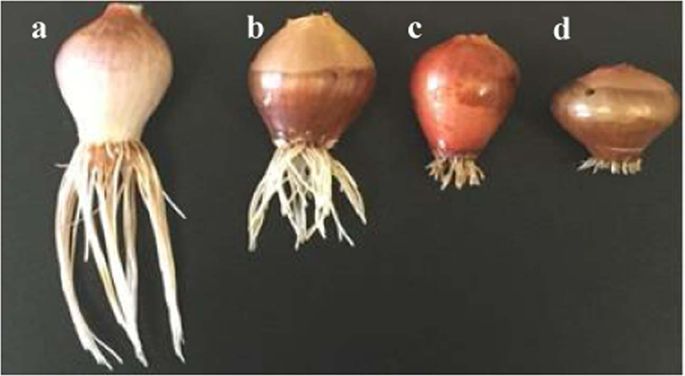Our official English website, www.x-mol.net, welcomes your
feedback! (Note: you will need to create a separate account there.)
The Potential Risk Assessment of Phenoxyethanol with a Versatile Model System.
Scientific Reports ( IF 3.8 ) Pub Date : 2020-01-27 , DOI: 10.1038/s41598-020-58170-9 Mehmet Çağrı Akgündüz 1 , Kültiğin Çavuşoğlu 1 , Emine Yalçın 1
Scientific Reports ( IF 3.8 ) Pub Date : 2020-01-27 , DOI: 10.1038/s41598-020-58170-9 Mehmet Çağrı Akgündüz 1 , Kültiğin Çavuşoğlu 1 , Emine Yalçın 1
Affiliation

|
In this study, the toxic effects of phenoxyethanol (Phy-Et), which is widely used in cosmetic industry, has been investigated with Allium test by means of physiological, cytogenetic, anatomical and biochemical parameters. To determine the changes in physiological reactions weight gain, relative injury rate, germination percentage and root length were investigated. Malondialdehyde, superoxide dismutase, glutathion and catalase levels were analyzed as biochemical parameters for determining the presence of oxidative stress. Mitotic index, micronucleus and chromosomal abnormality frequencies were studied as cytogenetic evaluation and the anatomical changes in root tip cells were investigated by cross sections. Changes in surface polarity and wettability were investigated by taking contact angle measurements of pressed root preparations. The mechanism of toxicity has been tried to be explained by these contact angles and this is the first study using contact angle measurements in toxicity tests. Consequently, exposure to Phy-Et resulted in a decrease in all measured physiological parameters and in mitotic index. In contrast, significant increases in the micronucleus and chromosomal abnormality frequencies were observed and the most significant toxic effect was found in 10 mM Phy-Et treated group. Phy-Et application induced oxidative damage and caused a significant increase in malondialdehyde level and a decrease in glutathione level compared to control group. Also a response occured against oxidative damage in superoxide dismutase and catalase activity and the activities increased in 2.5 mM and 5 mM Phy-Et treated groups and decreased in 10 mM Phy-Et treated groups. Furthermore, Phy-Et treatment resulted in some anatomical damages and changes such as necrosis, cell deformation and thickening of the cortex cell wall in root tip meristem cells of A. cepa. In the contact angle measurements taken against water, it was found that the wettability and hydrophilicity of the root preparations treated with Phy-Et were reduced, and this was the explanation of the growth abnormalities associated with water uptake. As a result, it was found that Phy-Et application caused toxic effects on many viability parameters and A. cepa test material was a reliable biomarker in determining these effects.
中文翻译:

通用模型系统对苯氧乙醇的潜在风险评估。
在这项研究中,已通过生理,细胞遗传学,解剖学和生化参数,通过Allium试验研究了在化妆品工业中广泛使用的苯氧乙醇(Phy-Et)的毒性作用。为了确定生理反应的变化,研究了体重增加,相对伤害率,发芽率和根长。将丙二醛,超氧化物歧化酶,谷胱甘肽和过氧化氢酶水平作为生化参数进行分析,以确定氧化应激的存在。研究细胞的有丝分裂指数,微核和染色体异常频率,并通过横截面研究根尖细胞的解剖学变化。通过对压制的根制剂进行接触角测量来研究表面极性和润湿性的变化。已尝试通过这些接触角来解释毒性机理,这是在毒性测试中首次使用接触角测量进行的研究。因此,暴露于Phy-Et会导致所有测得的生理参数和有丝分裂指数降低。相反,观察到微核和染色体异常频率显着增加,并且在10 mM Phy-Et处理组中发现了最显着的毒性作用。与对照组相比,Phy-Et的使用引起氧化损伤,并导致丙二醛水平显着增加,谷胱甘肽水平下降。在超氧化物歧化酶和过氧化氢酶活性中也发生了针对氧化损伤的响应,并且在2.5 mM和5 mM Phy-Et处理组中活性增加,而在10 mM Phy-Et处理组中活性降低。此外,Phy-Et处理导致洋葱的分生组织发生一些解剖学损伤和变化,例如坏死,细胞变形和皮质细胞壁增厚。在与水的接触角测量中,发现用Phy-Et处理的根制剂的润湿性和亲水性降低,并且这是与吸水有关的生长异常的解释。结果发现,Phy-Et的使用对许多生存力参数产生了毒性作用,而洋葱曲霉试验材料是确定这些作用的可靠生物标记。发现用Phy-Et处理的根制剂的润湿性和亲水性降低,这是与吸水有关的生长异常的解释。结果发现,Phy-Et的使用对许多生存力参数产生了毒性作用,而洋葱曲霉试验材料是确定这些作用的可靠生物标记。发现用Phy-Et处理的根制剂的润湿性和亲水性降低,这是与吸水有关的生长异常的解释。结果发现,Phy-Et的使用对许多生存力参数产生了毒性作用,而洋葱曲霉试验材料是确定这些作用的可靠生物标记。
更新日期:2020-01-27
中文翻译:

通用模型系统对苯氧乙醇的潜在风险评估。
在这项研究中,已通过生理,细胞遗传学,解剖学和生化参数,通过Allium试验研究了在化妆品工业中广泛使用的苯氧乙醇(Phy-Et)的毒性作用。为了确定生理反应的变化,研究了体重增加,相对伤害率,发芽率和根长。将丙二醛,超氧化物歧化酶,谷胱甘肽和过氧化氢酶水平作为生化参数进行分析,以确定氧化应激的存在。研究细胞的有丝分裂指数,微核和染色体异常频率,并通过横截面研究根尖细胞的解剖学变化。通过对压制的根制剂进行接触角测量来研究表面极性和润湿性的变化。已尝试通过这些接触角来解释毒性机理,这是在毒性测试中首次使用接触角测量进行的研究。因此,暴露于Phy-Et会导致所有测得的生理参数和有丝分裂指数降低。相反,观察到微核和染色体异常频率显着增加,并且在10 mM Phy-Et处理组中发现了最显着的毒性作用。与对照组相比,Phy-Et的使用引起氧化损伤,并导致丙二醛水平显着增加,谷胱甘肽水平下降。在超氧化物歧化酶和过氧化氢酶活性中也发生了针对氧化损伤的响应,并且在2.5 mM和5 mM Phy-Et处理组中活性增加,而在10 mM Phy-Et处理组中活性降低。此外,Phy-Et处理导致洋葱的分生组织发生一些解剖学损伤和变化,例如坏死,细胞变形和皮质细胞壁增厚。在与水的接触角测量中,发现用Phy-Et处理的根制剂的润湿性和亲水性降低,并且这是与吸水有关的生长异常的解释。结果发现,Phy-Et的使用对许多生存力参数产生了毒性作用,而洋葱曲霉试验材料是确定这些作用的可靠生物标记。发现用Phy-Et处理的根制剂的润湿性和亲水性降低,这是与吸水有关的生长异常的解释。结果发现,Phy-Et的使用对许多生存力参数产生了毒性作用,而洋葱曲霉试验材料是确定这些作用的可靠生物标记。发现用Phy-Et处理的根制剂的润湿性和亲水性降低,这是与吸水有关的生长异常的解释。结果发现,Phy-Et的使用对许多生存力参数产生了毒性作用,而洋葱曲霉试验材料是确定这些作用的可靠生物标记。











































 京公网安备 11010802027423号
京公网安备 11010802027423号